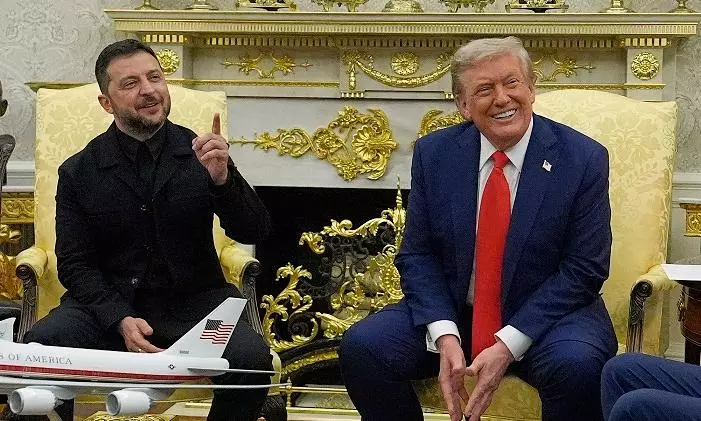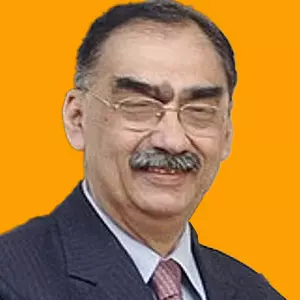
- Home
- India
- World
- Premium
- THE FEDERAL SPECIAL
- Analysis
- States
- Perspective
- Videos
- Sports
- Education
- Entertainment
- Elections
- Features
- Health
- Business
- Series
- In memoriam: Sheikh Mujibur Rahman
- Bishnoi's Men
- NEET TANGLE
- Economy Series
- Earth Day
- Kashmir’s Frozen Turbulence
- India@75
- The legend of Ramjanmabhoomi
- Liberalisation@30
- How to tame a dragon
- Celebrating biodiversity
- Farm Matters
- 50 days of solitude
- Bringing Migrants Home
- Budget 2020
- Jharkhand Votes
- The Federal Investigates
- The Federal Impact
- Vanishing Sand
- Gandhi @ 150
- Andhra Today
- Field report
- Operation Gulmarg
- Pandemic @1 Mn in India
- The Federal Year-End
- The Zero Year
- Science
- Brand studio
- Newsletter
- Elections 2024
- Events
- Home
- IndiaIndia
- World
- Analysis
- StatesStates
- PerspectivePerspective
- VideosVideos
- Sports
- Education
- Entertainment
- ElectionsElections
- Features
- Health
- BusinessBusiness
- Premium
- Loading...
Premium - Events

Trump's summit avoided core issues like territorial matters and ceasefire; as Ukraine faces mounting pressure to accept painful compromises, peace remains fragile
Act Two of the drama linked to US President Donald Trump’s efforts to bring an end to the Ukraine conflict is over. This part of the play was held on August 18 at the White House.
It began with Trump’s meeting with Ukraine’s President Volodymyr Zelenskyy, followed by a meeting of top leaders from leading European countries with Trump and Zelenskyy. Those present were French President Emmanuel Macron, German Chancellor (equivalent to Prime Minister) Friedrich Merz, British Prime Minister Keir Starmer, Italian Prime Minister Giorgia Meloni, and Finnish President Alexander Stubbs.
The President of the European Commission, Ursula von der Leyen, and the Secretary General of NATO, Mark Rutte, also took part in the meeting. The fact that so many European leaders dropped everything on their agenda to be at the White House at such short notice – the Putin-Trump meeting, which set up this gathering, was held only three days earlier – shows how important this meeting was for not only Ukraine but also Europe’s future.
Two relevant points
The real question regarding the result of this meeting is whether it has really advanced the chances of the Ukraine conflict to end. To answer that query, it is necessary to examine what this meeting achieved and what it left out. But before that, two relevant points have to be made.
First: when Russia’s invasion of Ukraine began in February 2022, the US, that was then under theJoe Biden administration, and the European powers were all united that Ukraine’s sovereignty and territorial integrity were sacrosanct. Indeed, Europe’s security structure was built on the foundations of these principles. Hence, their blatant disruption by Russia was unacceptable to these states. They demanded that Russia should withdraw its forces from Ukrainian territories, including Crimea, which it had invaded in 2015 and absorbed into its own territory.
In order to uphold their demands these Western countries decided to give extensive military support to Ukraine. However, their support could not prevent Russia from gaining control of areas of Donetsk, Luhansk, Zaporizhzhia and Kherson. It also formally amalgamated these territories into Russia itself.
Also read: Trump-Putin talks: Implications and what it means for peace in Ukraine
In the White House meeting there was no discussion on these territories. There was no demand that Russia should respect Ukraine’s internationally recognised borders. Trump had, after his Alaska meeting, stated that it was for Ukraine and Russia to discuss the territorial issue.
Just before the August 18 meeting he also indicated that the Crimean issue should not be opened. The fact that no European leader raised Ukraine’s sovereignty and territorial integrity shows that they are now reconciled to the fact that the territories that Russia controls cannot be recovered. They are therefore looking at a European order after the Ukrainian issue is settled.
Second: Except for German Chancellor Merz, who reportedly spoke about the need for a ceasefire between Russia and Ukraine, no other leader seems to have done so. Before the Alaska meeting, Trump also used to mention that a ceasefire was necessary to save lives. However, after the meeting, he has not focused on the ceasefire at all. Instead, he has moved his attention to an agreement between Ukraine and Russia.
On its part, Russia is continuing its bombardment of Ukraine. An internationally reputed news agency reported that the Ukrainian authorities claimed that Russia had launched 270 drones and 10 missiles against Ukraine, even while the White House meeting was on. This was not only part of Putin’s pressure tactics against Ukraine but also a signal to the US and the European countries that Russia is not going to accept a ceasefire.
This also implies that, at this stage, Putin wants a formal agreement of Ukraine’s changed borders endorsed by the major powers.
Focus on security guarantees
At the White House, the European leaders and Trump focused on security guarantees for Ukraine and on setting up a bilateral meeting between Zelenskyy and Putin to be followed up with a trilateral meeting between the two, along with Trump. The former point is a code term not only for Ukraine’s position after it reaches an agreement with Russia but also for a European order that the US will also uphold.
Also read: Trump moves away from ceasefire, now wants Russia-Ukraine peace deal
This is a point that needs clarification. Trump has already made it clear that Ukraine should not think of joining NATO. Now, Article 5 of the NATO charter makes it mandatory for all members to come to the aid of a member-state if it is attacked by a non-member country.
Some European thinkers are asserting that security guarantees for Ukraine should be based on a similar provision and that the US should be a party to it. That means that if, in the future, Russia attacks Ukraine, just as the NATO countries have to come to each other’s help, the security guarantees given to Ukraine would make it compulsory for the guarantors to help Ukraine. Trump has not signalled, as yet, that he would be willing to go so far.
Now to the latter point, that is, meetings between Zelenskyy and Putin and thereafter, both to meet with Trump’s participation/mediation. Trump interrupted his meeting with European leaders to have a telephonic conversation with Putin. It has been reported that Putin has agreed to such meetings in a period of two weeks.
Putin holds the cards
Clearly, he is not rushing into an agreement. This is because he holds the cards. He has control over a large part of Ukrainian territory. He has handled the sanctions imposed on him with China’s assistance. India’s purchase of Russian oil has been a factor but it has not been anywhere as critical as China’s help to him during this period. He has no opposition within Russia. He is therefore wanting to show that he has the strength, and all Western attempts at putting pressure on him have not succeeded.
After the White House meeting, Zelenskyy said that he had shown Trump the territories that Russia controls in Ukraine. They extend to around 20 per cent of Ukrainian land. Whatever agreement Zelenskyy may reach with Russia, it has necessarily got to involve the loss of very substantial Ukrainian territory.
Clearly, Trump expects that Zelenskyy will be able to make his people agree to this humiliation. He obviously feels that Ukrainians have suffered so much in human lives and the destruction of their country that they have no choice but to agree, and that Zelenskyy has to make them see this reality. Hence, the real pressure is on Zelenskyy now.
Also read: Settled 6 wars in 6 months, including India-Pakistan: Trump
The Ukrainian constitution requires, under Article 73 “issues of altering the territory of Ukraine are resolved exclusively by an All-Ukrainian referendum”. There is some indication that many Ukrainians are tired of war and want a negotiated peace. They may even be willing to accept Russia’s de facto control of the territory it already holds, but they are not prepared to formally recognise the de jure loss of Ukrainian territory. That would mean a frozen conflict.
The question is: will this satisfy Putin? The current indications are that it would not. In that case, it will be a clear choice between Putin’s desire for a full international acceptance of Ukraine’s territories and a de facto agreement leading to a frozen conflict.
Hence, to answer the question of whether the White House meeting has advanced the chances of an end to the Ukraine war. It has to an extent, but not conclusively so. There are many imponderables still.
(The Federal seeks to present views and opinions from all sides of the spectrum. The information, ideas or opinions in the articles are of the author and do not necessarily reflect the views of The Federal)


